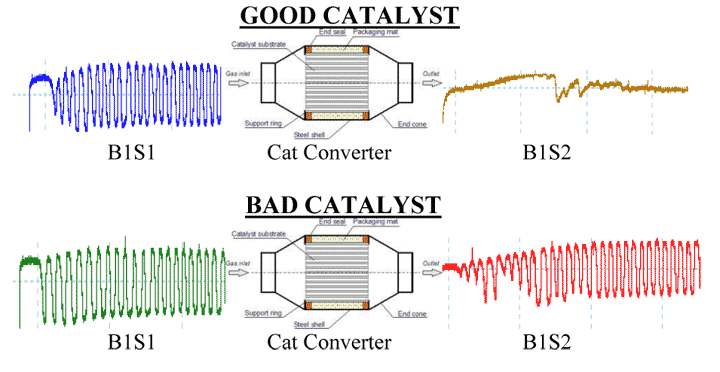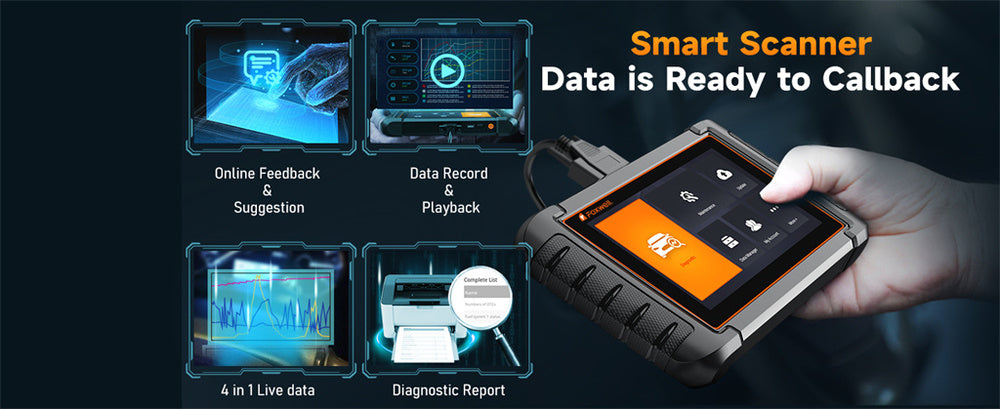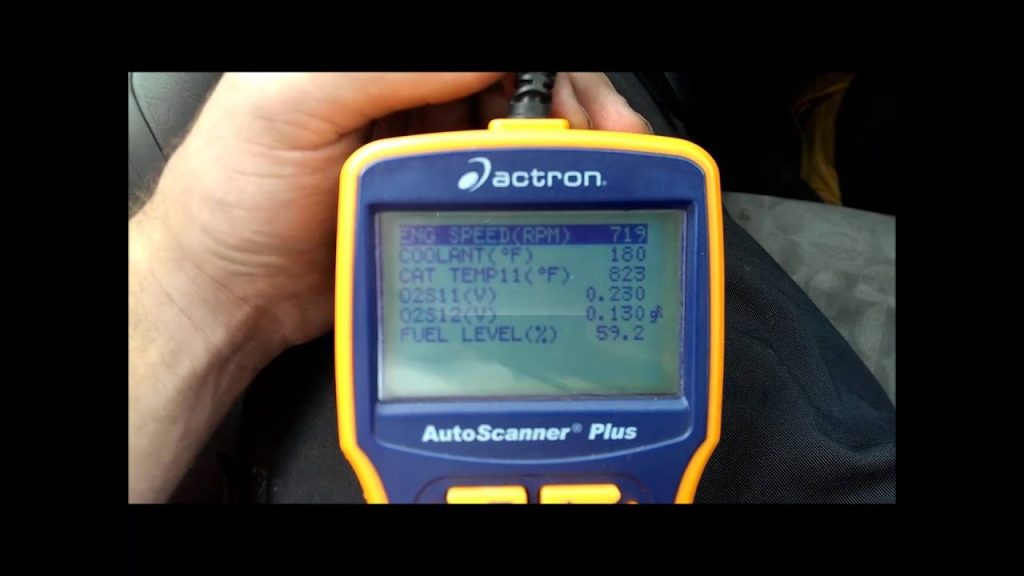Are you worried your car’s catalytic converter might not be working properly? Knowing how to test it with a scan tool can save you time and money on repairs.
In this guide, you’ll learn simple steps to check your catalytic converter’s health using a scan tool, even if you’re not a mechanic. By the end, you’ll feel confident spotting issues early and keeping your car running smoothly. Keep reading to discover how easy it is to take control of your vehicle’s performance today.
Tools Needed
Testing a catalytic converter with a scan tool requires specific tools. Having the right equipment helps you get accurate results and saves time. This section covers the essential tools you need before starting the test.
Choosing The Right Scan Tool
Select a scan tool that supports OBD-II protocols. Most vehicles after 1996 use this system. The tool should read live data and trouble codes related to the catalytic converter.
Look for a scan tool with an easy-to-read display. It should show oxygen sensor data and exhaust gas readings. Basic models work for simple checks, but advanced tools offer detailed diagnostics.
Additional Equipment
Besides a scan tool, you may need a digital multimeter. It helps check sensor voltages and wiring connections. A flashlight can be useful for inspecting sensors and connectors.
A vehicle repair manual or app with wiring diagrams is helpful. It guides you through sensor locations and test procedures. Gloves and safety glasses protect you during the inspection.

Credit: www.youtube.com
Preparing Your Vehicle
Start by parking your vehicle on a flat surface and turning off the engine. Connect the scan tool to the OBD-II port under the dashboard. Make sure the tool powers on and communicates with your car’s system before testing.
Safety Precautions
Start by parking your vehicle on a flat, stable surface. Engage the parking brake to prevent movement. Always wear gloves and safety glasses to protect your hands and eyes. Avoid loose clothing that might catch on engine parts. Make sure the engine is off before connecting the scan tool. Keep a fire extinguisher nearby just in case. Never work near hot engine parts to avoid burns.
Warm Up The Engine
Turn on your engine and let it run for about 10 to 15 minutes. A warm engine gives more accurate scan tool readings. Avoid revving the engine too high during warm-up. Keep the vehicle in park or neutral with the parking brake set. This step helps the catalytic converter reach its normal operating temperature. Only start testing after the engine is fully warmed up.
Connecting The Scan Tool
Connecting the scan tool is the first step in testing your catalytic converter. This process lets you read data from your vehicle’s computer. You need to connect the tool properly to get accurate results.
Locate The Obd-ii Port
The OBD-II port is usually under the dashboard on the driver’s side. It looks like a small trapezoid-shaped connector. Find it near the steering column or under the glove box. Make sure the car is off before you plug in the scan tool.
Pairing The Device
Turn on your car’s ignition without starting the engine. Power on the scan tool and follow its pairing instructions. Some tools connect via Bluetooth, others with a cable. Wait until the tool shows a connection confirmation. Now, it can communicate with your car’s computer for testing.
Reading Diagnostic Trouble Codes
Reading diagnostic trouble codes is the first step to test your catalytic converter. These codes help identify problems in your vehicle’s system. A scan tool reads these codes from your car’s computer. This process shows if the catalytic converter is working correctly or needs attention.
Accessing The Codes
Start by connecting the scan tool to the vehicle’s OBD-II port. This port is usually under the dashboard near the steering wheel. Turn on the ignition but do not start the engine. Follow the scan tool instructions to read the stored trouble codes. The scan tool will display a list of codes related to the engine and emissions system.
Identifying Catalytic Converter Issues
Look for trouble codes that start with P0420 or P0430. These codes indicate catalytic converter efficiency problems. Other codes might point to oxygen sensor faults affecting the converter’s performance. Note the codes and check the scan tool’s description for each. These clues help decide if the catalytic converter needs repair or replacement.
Monitoring Live Data
Monitoring live data with a scan tool helps check the catalytic converter’s performance. This process gives real-time information from the vehicle’s sensors. It shows how the engine and converter work under normal conditions. You can spot problems early by watching this data closely. Understanding these readings helps decide if the catalytic converter needs repair or replacement.
Checking Oxygen Sensor Readings
Oxygen sensors measure the amount of oxygen in exhaust gases. The scan tool shows the sensor readings in real time. Look for rapid changes in the sensor voltage. The front sensor should switch between low and high voltage often. The rear sensor should have steady voltage if the converter works well. If the rear sensor mimics the front sensor, the converter might be failing.
Analyzing Catalyst Efficiency
Catalyst efficiency compares oxygen sensor readings before and after the converter. The scan tool calculates this automatically in many vehicles. A healthy converter reduces harmful gases effectively. Efficiency values below 70% often mean the converter is not working well. Watching these values during different engine loads gives a clear picture. This data helps decide if the catalytic converter needs attention.

Credit: www.totalcardiagnostics.com
Performing A Catalyst Efficiency Test
Performing a catalyst efficiency test helps check if the catalytic converter works well. This test uses a scan tool to measure the converter’s ability to clean exhaust gases. It shows how much harmful gas the converter removes. The test helps find problems early and keeps the car running clean and smooth.
Setting Up The Test Parameters
First, connect the scan tool to the car’s OBD-II port. Turn the ignition on, but do not start the engine yet. Select the catalyst efficiency test option from the scan tool menu. Input the car’s make, model, and year to get accurate results. Follow the tool’s instructions to set test conditions. Some tools ask for engine temperature or speed. Make sure the engine is warm before starting the test. This ensures correct readings.
Interpreting Results
The scan tool shows the catalyst efficiency in percentage form. A high percentage means the converter works well. Low percentages suggest the converter is not cleaning gases properly. Check for error codes that indicate converter problems. Codes like P0420 point to low catalyst efficiency. Compare results with the car manufacturer’s standards. If the efficiency is below the limit, consider replacing the catalytic converter. Use the data to decide the next repair steps.
Common Problems And Solutions
Testing a catalytic converter with a scan tool can help find common problems early. Knowing these issues saves time and money. This section covers typical problems and easy solutions for your car’s catalytic converter.
False Codes And How To Clear Them
Sometimes, scan tools show error codes that are not true. These false codes can confuse car owners. Dirt, loose wires, or a weak battery may cause them.
To clear false codes, first check all sensor connections. Clean dirty sensors carefully. Reset the scan tool to erase old codes. Then, drive the car to see if the code returns.
Clearing false codes helps prevent unnecessary repairs. Always confirm the problem before replacing parts.
When To Replace The Converter
A catalytic converter needs replacement if it fails certain tests. One sign is a constant error code that does not clear. Another sign is poor engine performance or a bad smell.
Use the scan tool to measure converter efficiency. Low efficiency means the converter is not cleaning exhaust gases well. Also, physical damage or clogging calls for replacement.
Replacing the converter on time keeps your car running smoothly. It also reduces harmful emissions and avoids bigger engine problems.
Tips For Accurate Testing
Testing a catalytic converter with a scan tool requires careful steps. Accurate results depend on how you prepare and use the tool. Follow these tips to avoid mistakes and get clear data.
Small details matter. They can change the outcome of your test. Focus on engine condition and tool care for the best results.
Ensuring Proper Engine Conditions
Start the engine and let it reach normal temperature. Cold engines give false readings.
Keep the fuel tank at least half full. Low fuel can affect sensor signals.
Make sure there are no other engine problems. Issues like misfires can lead to wrong data.
Turn off all accessories like air conditioning. Extra load can affect engine performance during testing.
Regular Scan Tool Maintenance
Keep your scan tool updated with the latest software. Updates fix bugs and improve accuracy.
Check the tool’s cables and connectors before use. Damaged parts can cause poor communication.
Clean the tool after each use. Dirt and dust can affect screen and buttons.
Store the scan tool in a safe, dry place. Protect it from heat and moisture for longer life.

Credit: www.foxwelldiag.com
Frequently Asked Questions
How Does A Scan Tool Test Catalytic Converter Efficiency?
A scan tool checks oxygen sensor data before and after the converter. It compares readings to measure conversion efficiency. Low efficiency indicates a failing catalytic converter. This method helps diagnose issues without removing the part.
What Error Codes Indicate Catalytic Converter Problems?
Common codes are P0420 and P0430, signaling low converter efficiency. These codes trigger the check engine light. A scan tool reads these codes for quick diagnosis. They often point to a clogged or damaged catalytic converter.
Can I Test A Catalytic Converter Without A Scan Tool?
Yes, but a scan tool provides precise data. Without it, you rely on visual inspection and exhaust smell. Testing with a scan tool is more accurate and efficient. It detects subtle performance issues early.
How Long Does A Catalytic Converter Scan Test Take?
Typically, a scan test takes 5 to 10 minutes. The tool monitors sensor data during engine operation. This quick process helps identify converter problems fast. It’s a convenient diagnostic method for mechanics.
Conclusion
Testing your catalytic converter with a scan tool is simple and effective. It helps find problems early before they get worse. This method saves time and money on repairs. Regular checks keep your car running clean and smooth. Follow the steps carefully for accurate results.
Now, you can feel confident about your vehicle’s health. Keep your car in top shape with easy testing. Try it yourself and see the difference.


